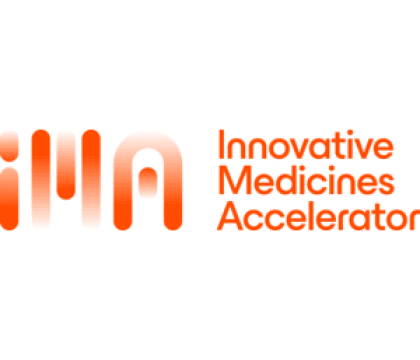2024 Small Molecule Therapeutics Request for Proposals
The IMA aims to accelerate the translation of scientific discoveries at Stanford University into new
medicines through prototyping of innovative therapeutics and vaccines while enabling hypothesis-driven
studies that impact human health. Through this request for proposals, the IMA is soliciting Letters of
Intent (LOIs) for projects to enter the HTS and the Medicinal Chemistry module of the IMA. Basic
research, including target identification, is outside the scope of the current LOI solicitation.
Aim and scope:
-
High-throughput screening: The IMA aims to partner with PI labs to enable the development,
optimization, and miniaturization of a biochemical or a cell-based assay in 384- or 1536-well
microplate format to screen against the HTSKC’s +200,000-member small molecule library.
Projects with a strong structural biology rationale (experimental or AlphaFold) or using a ligand-based
approach, but limited to low-throughput assays, will be considered for a virtual screen. -
Small molecule drug prototyping: Engineering of one or more small molecule leads to improve
potency, selectivity, pharmacokinetics and/or pharmacodynamics with the goal of identifying a
high-quality, patentable drug prototype. Projects with one or more small molecule leads (or series)
as starting points for medicinal chemistry are encouraged to apply. Projects that have successfully
completed HTS campaigns are eligible to enter the IMA small molecule prototyping program.
Competitive projects require 1) A strong therapeutic hypothesis that addresses a poorly met medical
need, 2) A novel biological target or mode-of-action that is well-differentiated from other ongoing
translational programs in academia or the biopharma industry, 3) Reproducible in vitro assays
and/or animal models to guide small molecule drug prototyping. The goal of each project is to validate
the therapeutic hypothesis underpinning the scientific discovery while generating intellectual property
around the drug prototype that emerges from this work.
Provided support:
-
High-throughput screening: Selected projects receive access to the Sarafan ChEM-H/
Chemical and System Biology High-Throughput Screening Knowledge Center (HTSKC). Support
will include access to HTS compound libraries, virtual screening capabilities, instrumentation fees,
associated consumables, expert training, and advice in assay development for highthroughput
screening projects. -
Small molecule drug prototyping: Selected projects receive access to the Sarafan ChEM-H
Medicinal Chemistry Knowledge Center (MCKC) to facilitate the design, synthesis, and screening
of novel small molecules to identify lead drug prototypes. Support will focus on improving
pharmacodynamics and pharmacokinetics of established molecular targets. -
Preclinical pharmacology: Support through the IMA’s Preclinical Pharmacology module can
include the bolstering of in vitro assays and establishment of appropriate existing animal models. -
External resources: Depending on the nature and requirements of each project, the IMA can
provide access to strategic alliances and vetted contract research organizations (CROs). -
Project management: IMA module leads in HTS, Preclinical Pharmacology and Medicinal
chemistry will collaboratively help the PI formulate a goal- and milestone-driven project plan. In
addition, the IMA Project Management team will support the project in planning, budgeting, and
identifying outsourcing opportunities.
The IMA will generally not provide salary support for members of the PI’s lab. The PI-lab is expected to
contribute the equivalent of one full-time FTE to the project.
Deadline:
All LOIs must be received by 5 PM PDT on Friday, June 28th, 2024. The most promising
proposals will be selected for full proposal development.
All Stanford faculty with PI eligibility are eligible to apply.
LOIs should be submitted as a single PDF file containing the following materials in the order indicated below. All documents must be single-spaced, Arial 11-point font with 1-
inch margins.
-
Title page (1 page):
• Project title
• PIs name, co-authors names, department, address, phone number, email address
• Project summary for a lay audience (150 words max). -
Letter of intent (3 pages maximum):
• Description of the poorly-met medical need the project seeks to address.
• The case for the biological target of the anticipated drug prototyping effort.
• Information relevant to the structure and/or properties of the molecular target that serves as the starting point for drug development (if available)
• Description of the intention of your project and the final goal.
• Description of the biological assays that will be required to optimize and validate the therapeutic prototype.
• Briefly describe the researchers in your lab who will support this project and the role(s) that they will play.
• Elaborate the novelty of the proposed approach, highlight potential competitors in academia and industry, and patent landscape. - NIH-format biosketch for all investigators
Faculty who are unsure of whether their project fits within the high-throughput screening or drug prototyping module are encouraged to contact Dr. Bruce Koch (bkoch@stanford.edu) or Dr. Mark Smith (mxsmith@stanford.edu) for advice.
Click “2024 Small Molecule Therapeutics" and “Apply Now." You'll need to log in or create a SlideRoom account. Once logged in, you'll be prompted to choose one of the two IMA modules that best fits your proposed research.
You don’t need to submit your applications to your Research Process Manager (RPM) in RMG or through your Office of Sponsored Research (OSR) Contract and Grant Officer (CGO) for their approval at this time.
Awarded projects can be supported for 12–18 months, according to a predefined project plan with critical milestones and go/no-go decision points. Details regarding specific roles, responsibilities, and usage of funds will be elaborated in individual award letters issued to selected projects.
